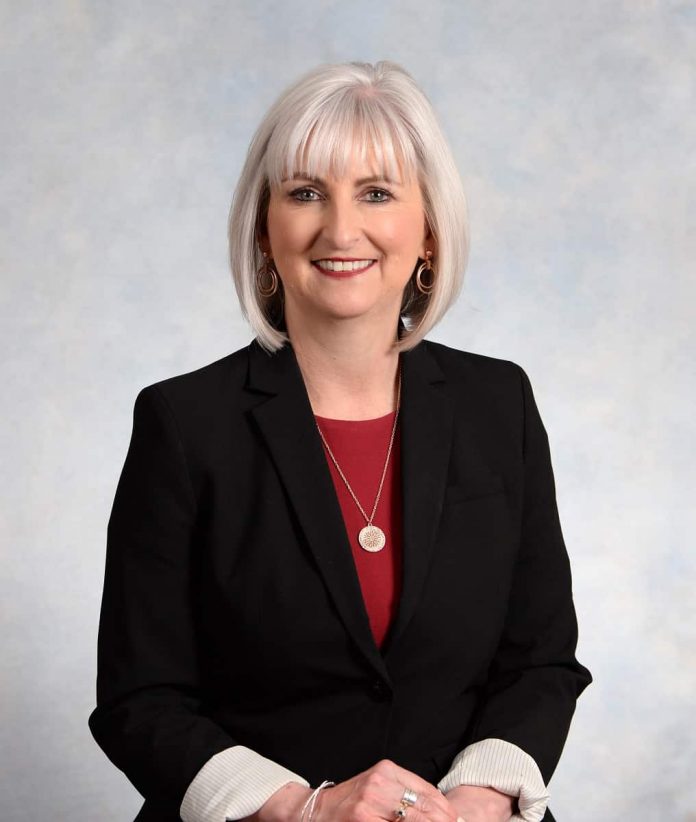B.C. Teachers’ Federation Teri Mooring in a letter to Education Minister Rob Fleming on Tuesday told him not to have a double standard on physical distancing when it comes to schools.
In that letter Mooring said, “The K–12 restart plan needs to bridge the gap between the advice given to the public as a whole around physical distancing and the reality facing our schools. Teachers and parents are being told to do one thing in their home and community lives, but then told they can ignore the most important preventative measure, physical distancing, in classrooms.”
She said: “Specifically, the federal funding [of $242 million to make schools safer should be used to reduce school and classroom density to enable teachers, support staff, and students to achieve physical distancing.”
Here is her letter:
Dear Minister Fleming:
Many people in British Columbia were heartened when the federal government announced on August 26, 2020 that BC would receive over $242 million as part of the Safe Return to Class Fund. That funding is a gamechanger for BC’s K–12 restart plan, and could be used in a proactive way to address many of the health and safety concerns teachers and parents have as the school year is about to start.
Earlier this summer, you expressed confidence that the $45.6 million in funding from BC’s COVID-19 Action Plan was sufficient to fund the required increase in cleaning, hand-hygiene stations and the availability of masks. That funding, especially to supply Personal Protective Equipment (PPE) for teachers and support staff was very welcome. Our hope now is that the $242 million is spent on other critical health and safety measures that promote physical distancing, the most important layer of protection against the spread of COVID-19.
Specifically, the federal funding should be used to reduce school and classroom density to enable teachers, support staff, and students to achieve physical distancing. The K–12 restart plan needs to bridge the gap between the advice given to the public as a whole around physical distancing and the reality facing our schools. Teachers and parents are being told to do one thing in their home and community lives, but then told they can ignore the most important preventative measure, physical distancing, in classrooms.
The learning group model is not a sufficient replacement for actual physical distancing. Our members understand that it helps with contact tracing and controlling an outbreak, but they also see clearly that it is a significant departure from best practices to prevent contracting COVID-19 or passing it on to a loved one at home.
With $242 million in new funding from the federal government, we have a real opportunity to help everyone stay safer. An opportunity to provide better protection for the people who work in our schools.
The BCTF is advocating on behalf of our members for:
· smaller classes to allow for physical distancing across all grades.
· hybrid and remote options in every school district to help reduce class sizes and school density as well as protect students and staff members, or their families, who are more vulnerable because of existing health concerns.
· assurance that students who opt into remote learning remain connected to their school and space is available to them if they return to school in-person.
· appropriate density and spacing for people working and learning in adult education, which is exempt from learning groups, without reducing either the number of adults who can access programs or the funding.
· more counsellors to support students in a trauma-informed manner.
Using the federal funding to meet these objectives will ensure workers are safer and students have access to the education they need. We all want our schools to reopen and teachers want to welcome our students back enthusiastically. However, the government has a duty and responsibility to make it as safe as possible. With the federal funding you and your government now have the opportunity to make much-needed improvements to the restart plan.
With solid hybrid and remote options in place, there will be teachers who need accommodations for health reasons available to do this work. Similarly, support staff like Education Assistants (EAs) who also need accommodations to stay safe will be available to support students remotely. This can all be done without increasing workloads for teachers or support staff. There are also Teachers Teaching on Call (TTOCs), included retired teachers, who could be engaged to do this work. With $242 million, it is all possible.
BC teachers are ready to keep working with your government to get the restart plan right. Let’s work together to ensure everyone in our schools is as safe as they can be.
Sincerely,
Teri Mooring
President












